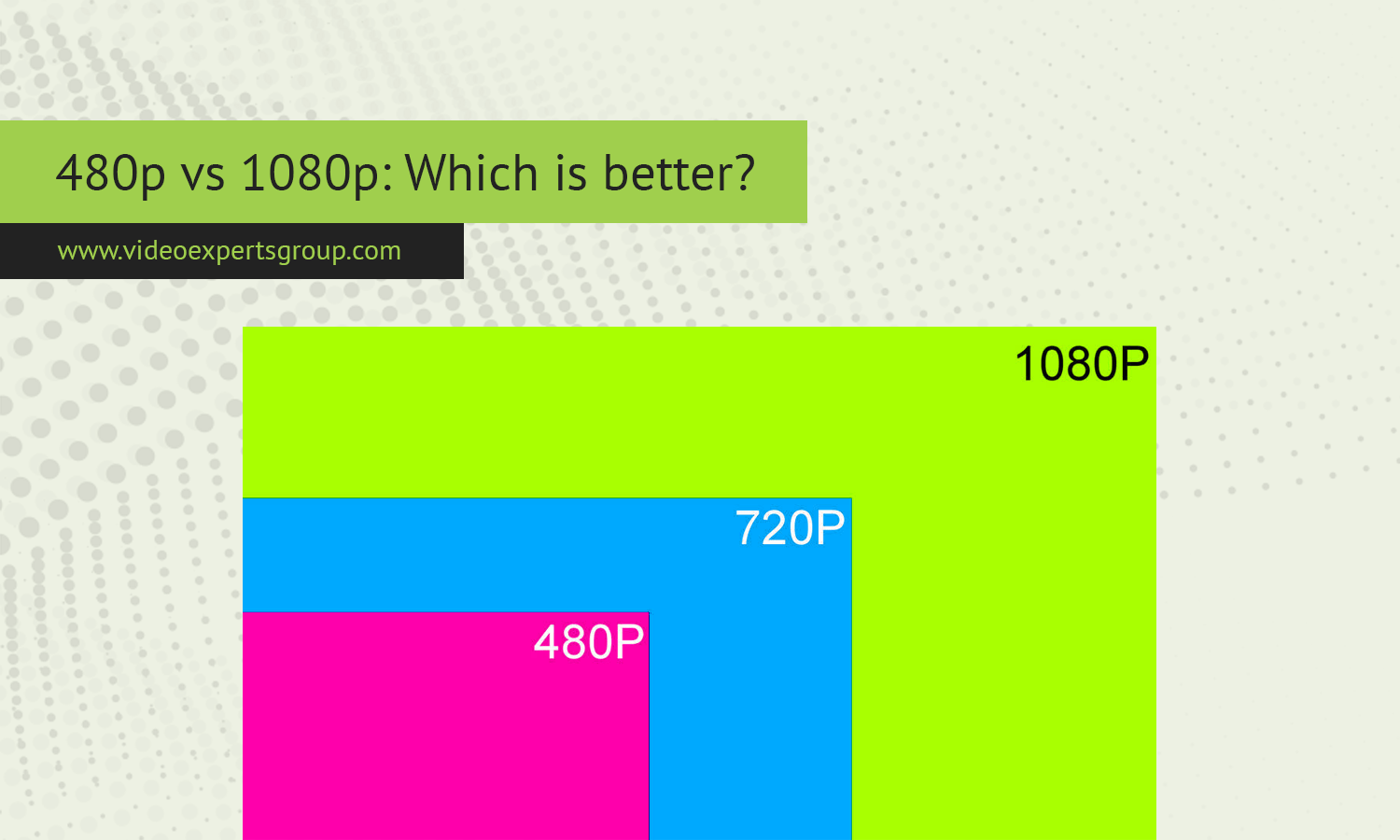These two resolutions are on opposite ends of the spectrum, with 480p representing Standard Definition (SD) and 1080p standing as Full High Definition (Full HD). Whether you're streaming content, watching movies, or gaming, understanding the difference between these resolutions can help you choose the best option for your needs. This article will explore what 480p and 1080p mean, highlight their differences, and help you decide which is better for your specific situation.
480p
Meaning
480p refers to a video resolution of 720x480 pixels, where 720 pixels are displayed horizontally and 480 pixels vertically. The "p" in 480p stands for "progressive scan," meaning each line of pixels is drawn sequentially, creating a smoother image compared to interlaced video formats. This resolution is typically considered Standard Definition (SD) and was widely used in older television broadcasts, DVDs, and early streaming services.
Uses
480p is often used in scenarios where bandwidth or storage space is limited. It’s common for streaming platforms to offer 480p as a low-data option, making it ideal for mobile devices or slower internet connections. Because 480p files are smaller, they’re also suitable for situations where quick loading times are essential or when users need to conserve data. Additionally, older devices or systems that cannot handle higher resolutions often default to 480p.
1080p
Meaning
1080p, also known as Full High Definition (Full HD), offers a much higher video resolution of 1920x1080 pixels. This means the video is composed of 1920 horizontal pixels and 1080 vertical pixels, providing a much sharper and more detailed image compared to 480p. Like 480p, the "p" in 1080p stands for "progressive scan," ensuring that each frame is drawn sequentially for a smooth and clear picture.
Uses
1080p is the standard resolution for most modern HDTVs, Blu-ray discs, gaming consoles, and streaming platforms. It provides a high level of detail, making it ideal for large screens and content where visual clarity is important, such as movies, sports, and video games. Because 1080p offers a much crisper and more vibrant image, it enhances the viewing experience, especially when watching on larger displays or in close proximity to the screen. It's also favored by content creators and professionals who require higher image quality for their projects.
What Is the Difference Between 480p and 1080p?
The most significant difference between 480p and 1080p is the number of pixels that make up the video image. 480p has a resolution of 720x480 pixels, totaling 345,600 pixels per frame. In contrast, 1080p boasts a resolution of 1920x1080 pixels, totaling 2,073,600 pixels per frame. This means 1080p has nearly six times the number of pixels as 480p, resulting in far superior image clarity, sharpness, and detail.
This difference in resolution is particularly noticeable when viewed on larger screens. While 480p may appear blurry or pixelated on a big display, 1080p maintains a crisp and clear image, even when viewed up close. This makes 1080p the preferred choice for home theaters, gaming setups, and any scenario where high image quality is a priority.
Another key difference lies in data usage and storage requirements. 1080p files are significantly larger than 480p files because of the higher pixel count. This means streaming 1080p content requires more bandwidth and a faster internet connection to avoid buffering. Likewise, storing 1080p videos will take up more space on your device compared to 480p videos. As a result, 480p might be preferable when data or storage space is a concern, especially if you’re viewing content on a smaller screen where the resolution difference is less noticeable.
Which Is Better, 480p or 1080p?
The choice between 480p and 1080p largely depends on your specific needs and the context in which you’re viewing content.
If you’re using a large screen, such as an HDTV or a projector, or if you’re watching content where visual detail is important, 1080p is undoubtedly the better choice. The higher resolution provides a sharper, more detailed image that enhances the viewing experience, making it ideal for movies, gaming, and other high-quality content. The additional data usage and storage requirements are typically worth the trade-off for the superior image quality.
On the other hand, 480p may be the better option if you’re watching on a smaller screen, such as a smartphone or tablet, or if you’re dealing with limited bandwidth or data caps. The difference in image quality between 480p and 1080p is less noticeable on smaller screens, and the lower data consumption can be a significant advantage in scenarios where internet speed or data usage is a concern. Additionally, 480p might be more suitable for older devices that cannot handle higher resolutions.
1080p is generally better for high-quality viewing experiences on larger screens, while 480p is more practical for smaller screens, lower bandwidth, or data-saving situations. Your decision should take into account the device you’re using, the quality of your internet connection, and how much you value image quality over data consumption.
















